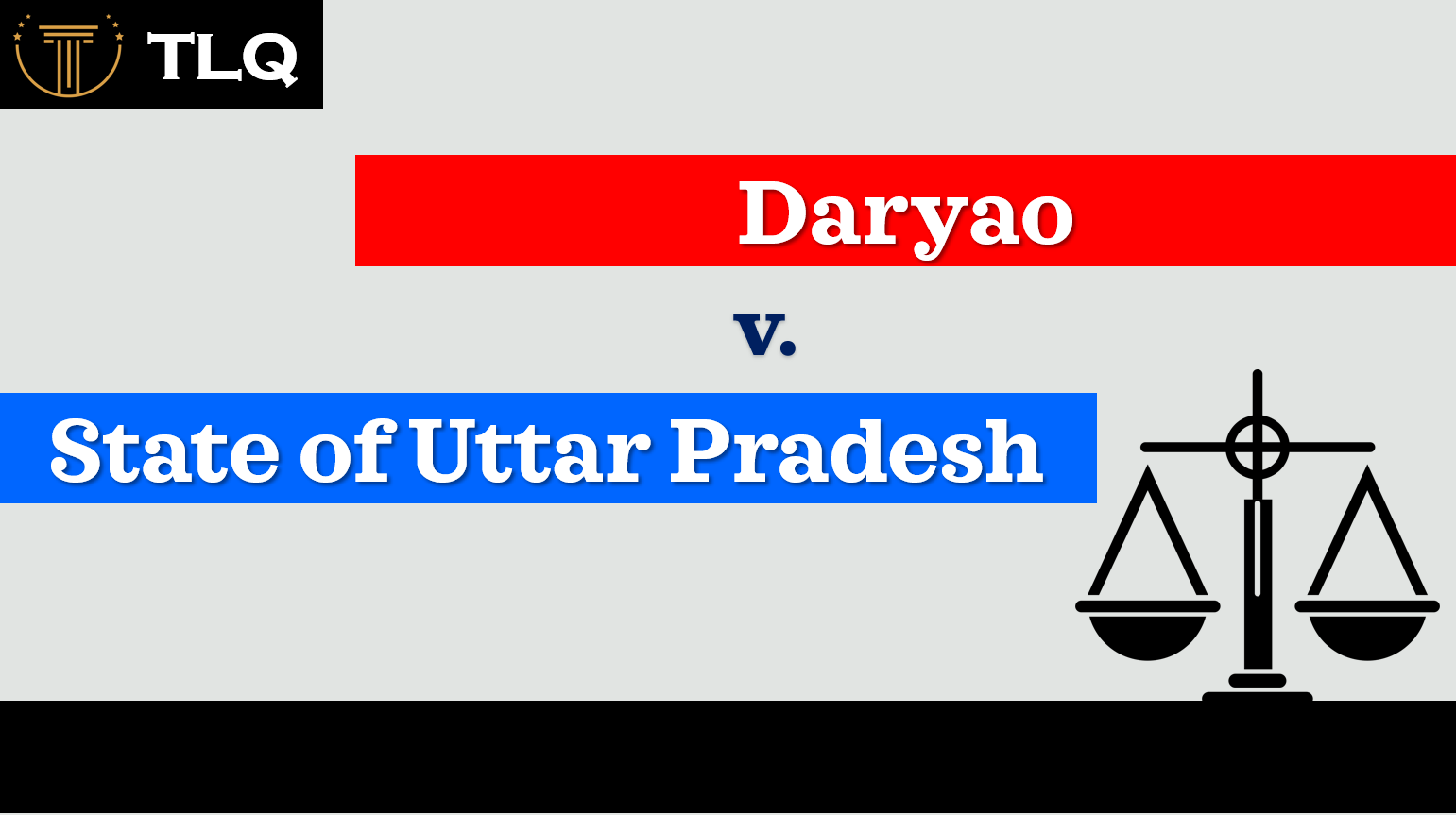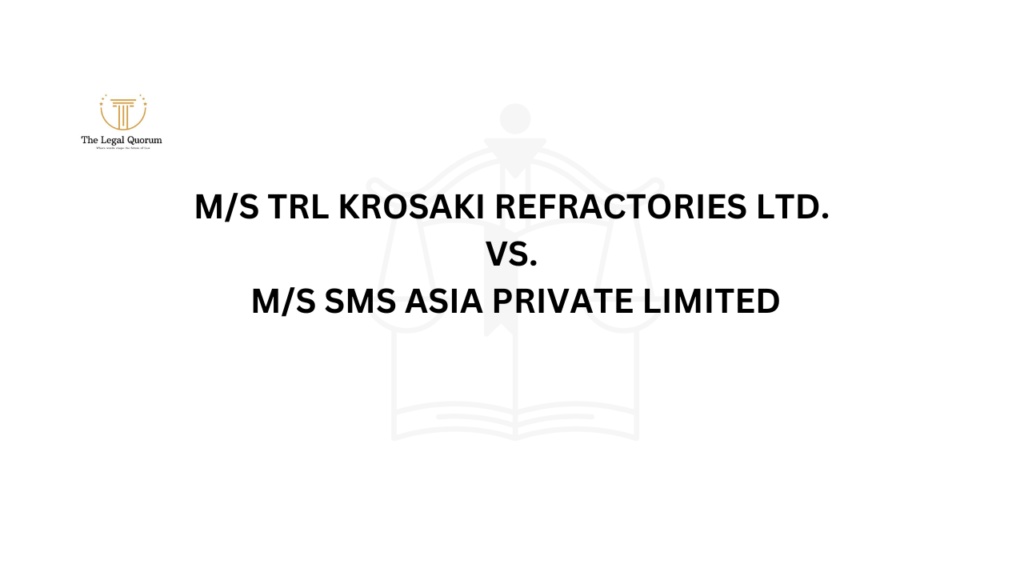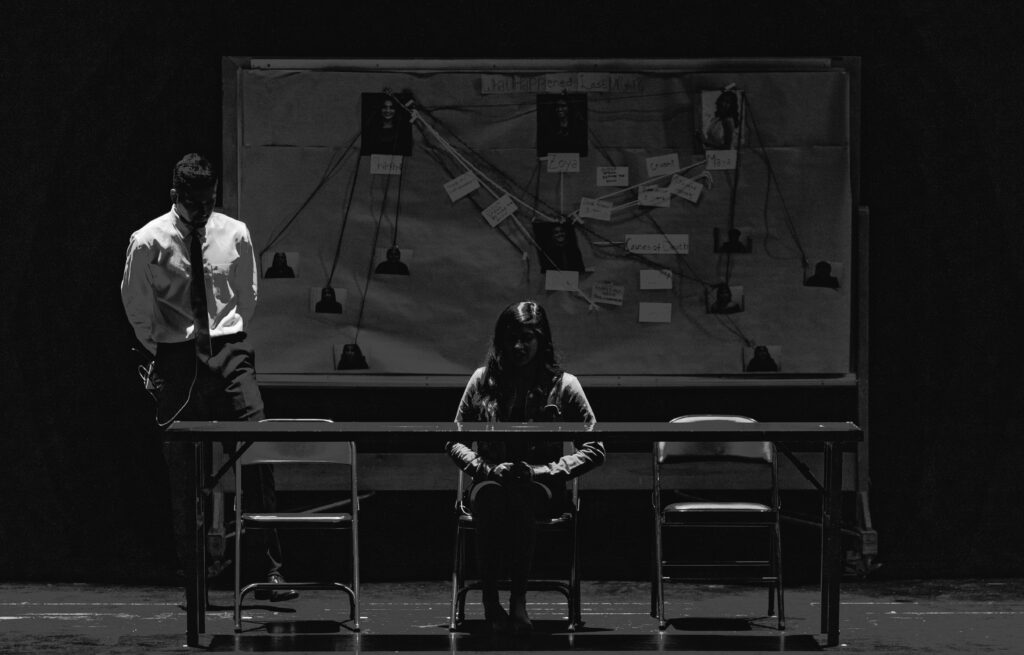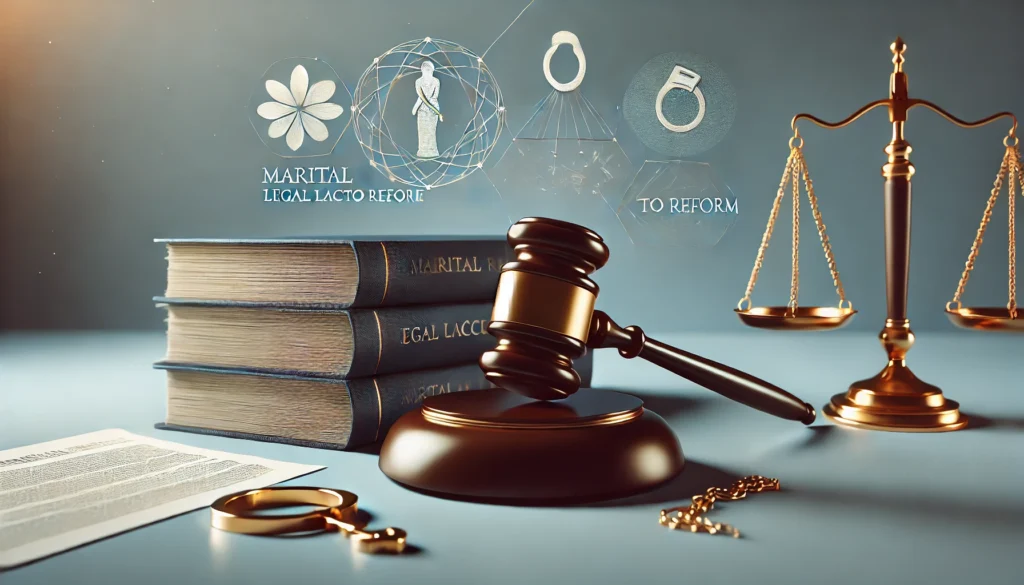Published On: 4th July, 2024

Authored By: Sarthak Mishra
Dharmashastra National Law University, Jabalpur
ABSTRACT
The document discusses the principle of Res Judicata as applied in Indian jurisprudence, particularly through the landmark case Daryao & Others v. State of UP & Others. The Supreme Court emphasized the importance of finality in judicial decisions to uphold the rule of law and prevent repetitive litigation. Justice Gajendragadhkar stated that it is in the public interest to consider judgments by competent courts as final and binding.
Key points include:
- The principle of Res Judicata ensures that once a competent court has rendered a judgment, the same parties cannot re-litigate the same issue on the same factual basis.
- The Supreme Court affirmed that this principle applies even to petitions under Article 32 of the Indian Constitution. If a petition under Article 226 is dismissed on its merits, it will act as Res Judicata in subsequent proceedings.
- Exceptions to this rule exist if the factual matrix changes or if the decision is reversed or altered in appeal or other constitutional processes.
The document also cites other cases reinforcing this principle, such as Satyendra Kumar & Ors v. Raj Nath Dubey & Ors (2016), where a different cause of action made the case maintainable, and Jamia Masjid v. Sri K.V. Rudrappa (2022), where a change in the factual matrix allowed for a new petition.
INTRODUCTION
Before the current case, Daryo & Ors. v State of Uttar Pradesh[1], the question of when a High Court’s dismissal of a writ petition would be a bar to the plea under the Supreme Court in terms of Res Judicata was disputed. Articles 32 and 226 of the Indian Constitution, as well as Section 11 and Order XLVII, Rule 1 of the Code of Civil Procedure, 1908, which deal with Res Judicata, were employed. “M.S.M. Sharma v. Shree Krishna Sinha”[2] and “Raj Lakshmi Dasi v. Banamali Sen”[3] were the two primary cases mentioned in this case. Other cases mentioned in this case included “Laxmanappa Hanumantappa Jamkhandi v. Union of India”[4]; “Dewan Bahadur Seth Gopal Das Mehta v. Union of India”[5]; “Basheshar Nath v. CIT”[6]
Though section 11 of the Code of Civil Procedure[7] explains the principle of Res Judicata as it is, is not applicable to writ petitions, The principle of Res Judicata cannot be considered as not applicable to subsequent petitions or regular suits on the same grounds in contention between the same parties brought under Article 32 or Article 226 of the Indian Constitution. Along with discussion on the case law, the author would be going through various other case laws which were cited by the respected court, during the hearing of the case, along with its reiterations in various other case laws.
FACTS OF THE CASE
The petitioners, long-time tenants of a piece of land, were displaced in July 1947 due to communal unrest and found the respondents had taken unauthorized possession upon their return in November 1947. They successfully filed eviction suits in 1948, but the respondents’ appeal to the Board of Revenue led to a 1954 ruling in favor of the respondents based on the U.P. Zamindari Abolition and Land Reforms (Amendment) Act of 1953. The petitioners’ subsequent appeal to the Allahabad High Court under Article 226 was withdrawn after the court upheld the amended Act, resulting in the dismissal of their petition on March 29, 1955.
On March 14, 1956, the petitioners filed a petition under Art. 32[8] in the Supreme Court under these conditions. It was clear that the grounds for filing a petition against the Board’s decision were identical to the grounds that they had raised in their previous petition before the Allahabad High Court; because of this, the respondents argued that the current petition is barred by Res Judicata.
LEGAL ISSUES RAISED AND DECIDED
Even after the Allahabad High Court’s verdict, the petitioners went to the Supreme Court, alleging that because it was a fundamental right Article 32(1), Res Judicata would not apply in this situation and case at hand. The argument by the petitioner that the verdict of the High Court could not be admitted as Res Judicata as the petition was filed under Article 226 was held as without merit.
DOCTRINE OF RES JUDICATA
The principle of “Res Judicata,” meaning “a thing resolved,” originates from common law and prohibits re-litigating cases between the same parties in court. Once a final ruling is made, subsequent judges use res judicata to uphold the initial judgment, preventing injustice and conserving court resources. It avoids contradictory decisions and ensures a successful plaintiff does not receive damages twice for the same injury. Res judicata encompasses claim preclusion, which stops suits on causes of action already decided, and issue preclusion (collateral estoppel), which prevents re-litigation of factual issues already determined. The primary challenge for courts is determining the scope of a previous judgment when applying res judicata.”[9]
This doctrine is based on the following three maxims:
- “Nemo debet lis vaxari pro una eteadem which means, none should be vexed twice for the same cause”;
- “Interest reipublicae ut sit finis litium which means that it is the interest of the state that there should be an end to litigation”;
- “Res Judicata pro verita occipitur which means that a judicial decision must be accepted as correct”,
The first ground is based on the notion of private interest, whereas the other two are based on public policy and the greater interests of society. [10]
WRIT PETITIONS:
The Supreme Court declared for the first time in Pandit M. S. M. Sharma v. Krishna Sinha[11] that “the basic principle of Res Judicata applies even to writ petitions filed under Article 32 of the Indian Constitution.
Therefore, subsequent petitions are prohibited if the Court rejects a petition brought forth in accordance with Article 32 of the Constitution. In the same spirit, if a writ petition brought under Article 226 is found to be frivolous and rejected, “the judgment rendered will be binding on the parties unless it is altered or reversed on appeal or by other legal means allowed by the Constitution. A party would be prohibited from disregarding the aforementioned decision and requesting the same or similar orders or writs from the High Court under Article 226 or the Supreme Court under Article 32 based on the same facts”.[12]
CONTENTIONS OFOF PETITIONERS:
Mr. Agarwal, petitioners’ advocate, Res Judicata is a principle, “nothing more than a technical rule analogous to the rule of estoppels”, and cannot be used to dismiss a petition seeking to defend the Constitution’s fundamental rights. The right to petition the Supreme Court for the enforcement of fundamental rights, which is guaranteed in Article 32(1), is considered to be a fundamental right in and of itself, and it would be highly inappropriate to curtail that right by employing the Res Judicata legal doctrine.
CONTENTIONS OF RESPONDENTS:
The Advocate-General of Punjab argued that Article 32(1) of the Indian Constitution grants citizens the right to approach the Supreme Court through appropriate proceedings, like an application for special leave under Article 136 or an appeal, rather than an automatic right to file a petition. He noted that similar to Articles 226 and 32, the provision of leave is discretionary and does not obligate the Court to provide a remedy. Res Judicata, defined in Section 11 of the CPC and based on public policy, ensures the finality of court decisions to prevent repetitive litigation. The principle applies even to petitions under Article 32 concerning fundamental rights. Sinha, C.J., referenced the case of Raj Lakshmi Dasi v. Banamali Sen, affirming that Res Judicata applies to issues decided after full contest, regardless of the first tribunal’s jurisdiction over subsequent suits or the exact subject matter. He emphasized that Article 226 empowers High Courts similarly to Article 32 for the Supreme Court, making the High Court’s decision under Article 226 applicable as Res Judicata to Article 32 petitions.[13]
DECISION
The petitioners in the above case did not prefer an appeal against that order to this court but he filed an independent petition under article 32 of the Constitution. The High Court decided against the petitioner, based on the merits of the writ petition filed under article 226. The decision acted as a bar to bringing of a petition under Article 32 of the Indian Constitution. The petition was based on the same facts and requested for the same reliefs, hence the court was of the opinion that this position was not maintainable and was prohibited by the principle of res judicata.
Notable Cases discussed in the case of Daryao V. State Of Uttar Pradesh was:
- S.M. Sharma v. Dr Shree Krishna Sinha, 1959[14]
In this case, the court evaluated whether the principle of res judicata applies to petitions filed under Article 32 of the Indian Constitution. The petitioner initially sought a writ against the Chairman and Members of the Committee of Privileges of the State Legislative Assembly, which the court dismissed. The petitioner then filed a new petition with similar claims and demands. The court had to determine the eligibility of this second petition and concluded that it was ineligible due to the res judicata rule, which prevents re-litigation of the same issues between the same parties.
PRINCIPLES LAID DOWN BY THE SUPREME COURT
The Supreme in the case of Daryao v. State of Uttar Pradesh, laid several principles that can be described as follows:
- “If a petition under Article 226 is dismissed after being examined on the merits as a contested issue, the decision is final and binding on the parties unless overturned by an appeal or other pertinent constitutional acts.
- Order of writs cannot be requested by a party who is ignoring the earlier ruling and filing an original petition under Article 32 based on the same facts and relief.
- The denial of a writ petition under Article 226 by a High Court does not preclude a subsequent claim under Article 32 if the reason for the denial was the party asking for the writ’s latches or because the party had another remedy open to it.
- If a petition is dismissed in limina (in the beginning) without a spoken order, the dismissal cannot be considered a Res Judicata bar.
- Because there has been no judgment on the merits by the court, a petition dismissed as withdrawn cannot be used to prohibit a subsequent petition under Article 32.
- In writ proceedings, the concept of constructive Res Judicata applies, and any issue that might have and ought to have been presented in an earlier proceeding but wasn’t in that proceeding cannot be raised in an upcoming case.
- Any argument that might have and should have been brought but wasn’t in an earlier proceeding cannot be presented in a subsequent proceeding under the theory of constructive Res Judicata, which is applicable to writ procedures.
- Different phases of a single litigation or procedure are subject to the general rules of Res Judicata.
- If the petitioner withdraws the initial petition without the court’s approval to file a new petition on the same subject matter, the new petition is not maintainable”.
ANALYSIS
The landmark case of Daryao v. State of Uttar Pradesh established the application of Section 11 of the Code of Civil Procedure (CPC) to writ petitions filed under Articles 32 and 226 of the Indian Constitution. This judgment provided a framework for the Indian judiciary to handle cases based on the same or similar factual circumstances, allowing courts to prioritize cases based on their importance and relevance. The principle of res judicata has since evolved in India, with several subsequent decisions referencing the Daryao case, further solidifying its role in preventing the re-litigation of identical issues.
Reference(s):
[1] (1962) 1 SCR 574: AIR 1961 SC 1457
[2] AIR 1960 S.C. 1186
[3] [1953]4SCR154
[4] (1955) 1 SCR 769 at pp. 772, 773
[5] (1955) 1 SCR 773 at p. 776
[6] (1959) Supp (1) SCR 528
[7] https://legislative.gov.in/sites/default/files/A1908-05.pdf
[8] https://legislative.gov.in/sites/default/files/COI-updated.pdf
[9] “Mulla Code of Civil Procedure, Vinay Kumar Gupta,14th Edition, LexisNexis Butterworths, New Delhi”
[10] Civil Procedure C.K.Takwani, Eastern Book Company, New Delhi, Sixth Edition, 2009.
[11] 1959 AIR 395
[12] [1961]1SCR96
[13] [MANU/SC/0063/1952 : [1953]4SCR154]
[14] AIR 1960 S.C. 1186




